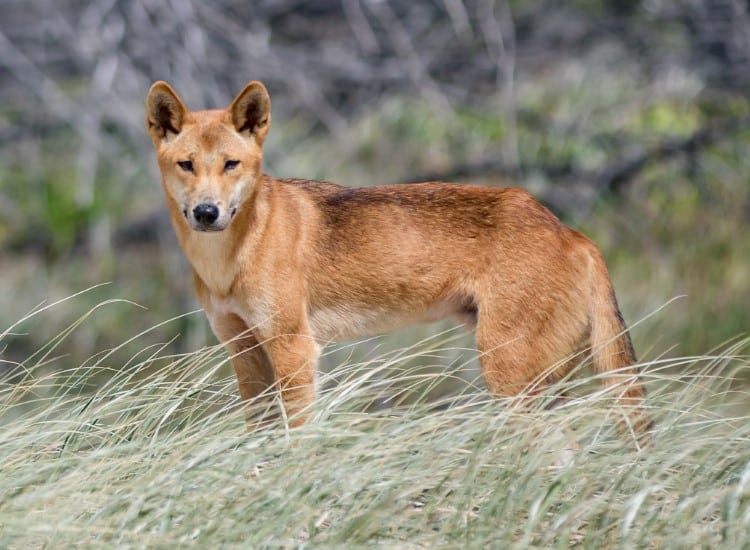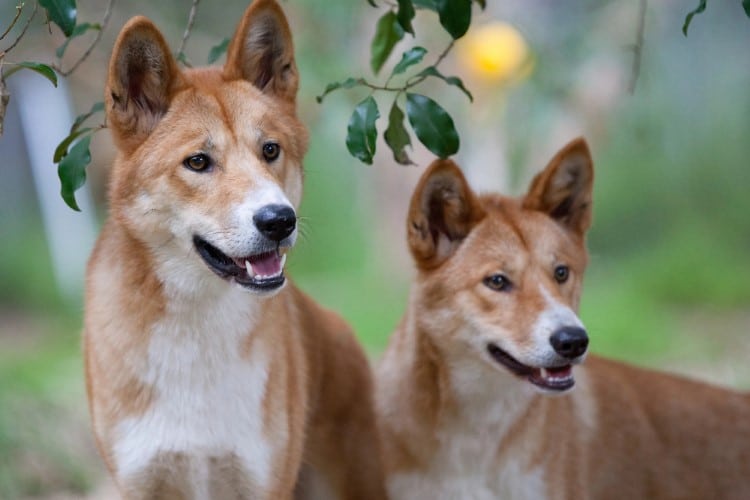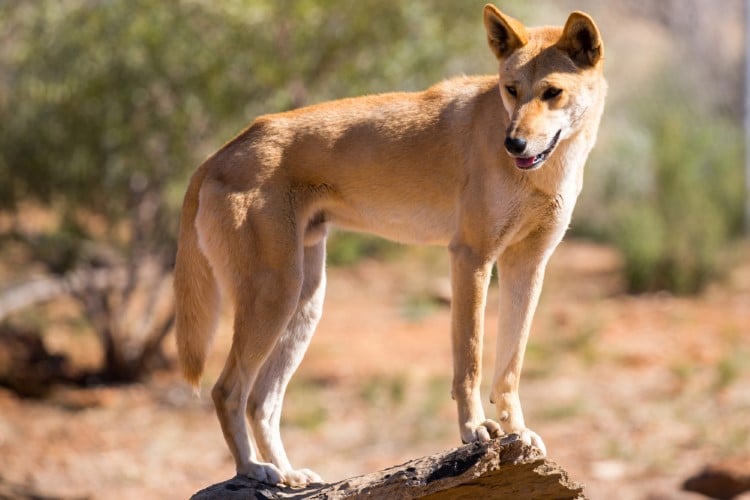
Photo: Newretreads via Wikimedia Commons (CC BY-SA 4.0)
Dingoes are as ubiquitous in Australia as kangaroos or koalas, yet we know surprisingly little about the origins of these medium-sized wild dogs. Thanks to ancient dingo DNA, researchers have recently solved some mysteries about their origins and learned more about their evolutionary relationships to other canines.
While dingoes were introduced to Australia by humans from Southeast Asia, they are still considered native to the continent. Dingoes—with their distinct sandy coat, bushy tails, and erect ears—hold a prominent place in Australia’s natural and cultural identity as one of its most iconic animals. As one of the continent’s few native land mammals, they have been connected with Aboriginal and Indigenous cultures for millennia.
Unfortunately, while typically considered a non-aggressive species, dingoes have been known to attack livestock, pets, and humans. As a result, they are often considered pests and have been killed by farmers for their behavior.
However, new research published in Proceedings of the National Academy of Sciences could help the public understand these animals better and conserve their population. By comparing the DNA from 42 ancient dingo skeletons to DNA from various canines, modern dingoes, domestic dogs, wolves, and New Guinea singing dogs, several myths are also dispelled.
For instance, contrary to popular belief, the study shows that dingoes largely did not interbreed with domestic dogs, indicating that they are a unique species.
The study also suggested that modern dingoes share little genetic ancestry with domestic dogs. Rather, their ancestors are ancient dogs and wolves from China and the Tibetan plateau. The findings suggest that dingoes likely arrived in Australia between 3,000 and 8,000 years ago, potentially transported by traders across the Pacific Ocean. Additionally, ancient DNA analysis revealed shared ancestry between modern New Guinea singing dogs—one of the rarest wild dogs—and dingoes.
The dingo remains used for the study came from museums and ranged in age from 400 to over 2,746 years old. Before their life in a museum, they were discovered in various parts of the continent, with two distinct regional populations split along the Great Dividing Range.
It was also discovered that humans did not affect the divide between southeastern and northwestern dingo populations, as commonly believed. In the late 19th and early 20th centuries, a 3,500-mile dingo fence to deter dingoes was built, and it was thought that this manmade intervention caused the population to split. However, the study revealed that the populations had been separated for over 2,000 years. With this information, researchers hypothesize that dingoes migrated in two distinct events to different parts of Australia and remained isolated due to the continent’s terrain.
The findings of this new DNA study emphasize the importance of preserving dingoes, as they confirm that they are a distinct species. As such, laws about shooting them could change, and they have a better chance of receiving special conservation status.
“We have to respect these ancient remains because they are telling us a story,” Dr Sally Wasef, an expert on ancient DNA from the Queensland University of Technology and a lead author of the research, tells The Guardian.
Understanding the dingo’s role as a predator and symbol of Australia’s cultural and natural landscape is essential for conserving its unique place in the continent’s ecosystem and heritage.
“We hope people making decisions about dingoes today now see these amazing animals have been around a long time and had time to harmonize with the environment,” adds another lead author, Dr Yassine Souilmi, of the University of Adelaide’s Australian Centre for Ancient DNA and Environment Institute.
Recent DNA analysis of ancient dingo skeletons has clarified their origins and evolutionary history, showing minimal genetic overlap with domestic dogs.
Genetic analysis of 42 ancient dingo specimens sheds light on their evolution. Today’s dingoes likely resulted from a single wave of migration into Australia. Southeastern populations mixed with New Guinea singing dogs around 2,500 years ago. In PNAS: https://t.co/BwmRg6jRjo pic.twitter.com/CyQz871wpT
— PNASNews (@PNASNews) July 11, 2024
Pacific traders likely transported dingoes, which originated from ancient dogs and wolves in China and Tibet, to Australia thousands of years ago.

Photo: filedimage/Depositphotos
This study underscores the importance of conserving dingoes as a unique species necessary to Australia’s natural and cultural heritage.

Photo: filedimage/Depositphotos
h/t: [Smithsonian Magazine]
Related Articles:
DNA Analysis Reveals Interesting Information About the Origins of Native Americans
World’s Oldest DNA Is Discovered in a 1.2-Million-Year-Old Mammoth
Rare Ancient Breed of Singing Dogs Spotted in the Wild After 50 Years
